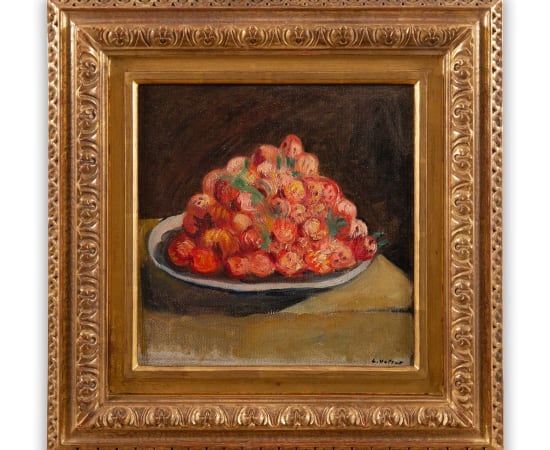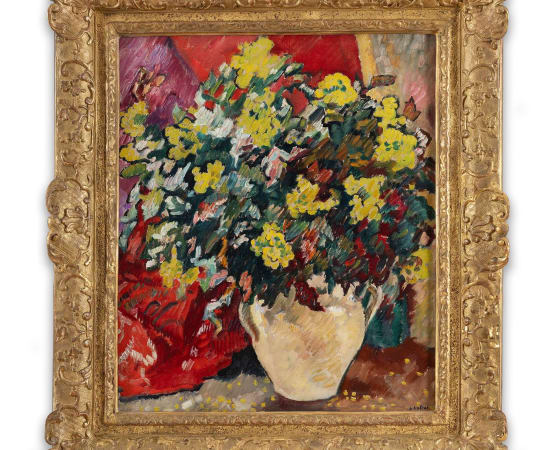Louis Valtat (1869-1952) French
جسر بين الانطباعية والفوفية، رائد اللون والضوء
في معرض بايلي، نبرز الفنانين الذين شكّلوا تطور الفن الحديث من خلال الابتكار والتعبير النابض بالحياة. يُعتبر لويس فالطا شخصية محورية، حيث تشكّل أعماله جسرًا ديناميكيًا بين الانطباعية والفوفية، وهو مشهور باستخدامه المشع للألوان والضوء والفرشاة الحيوية.
وُلد في دييب بفرنسا عام 1869، ودرس في مدرسة الفنون الجميلة الراقية في باريس. في بداياته، عرض أعماله إلى جانب الانطباعيين، متأثرًا بشغفهم بالضوء الطبيعي والتأثيرات الجوية. إلا أن لوحته وأسلوبه تطورا سريعًا نحو لغة كروماتية أكثر جرأة وكثافة، سبقت بها الحركة الفوفية.
كان فالطا من أوائل الفنانين الذين تبنوا الألوان الزاهية وغير الطبيعية التي عرّفت الفوفية، وعرض إلى جانب هنري ماتيس وأندريه ديران في معرض صالون الخريف الحاسم عام 1905. تتميز أعماله — من مناظر طبيعية وطبيعة صامتة إلى بورتريهات — بالحيوية الفورية والتوليف الغنائي بين الشكل واللون.
طوال حياته الفنية، حافظ فالطا على صوت فريد يمزج بين حساسية الانطباعية وحيوية الفوفية، مع استكشاف التعبيرية في ضربات الفرشاة والتكوينات. مشاهد السواحل المشمسة والحدائق الخصبة والديكورات الداخلية الحميمة التي يرسمها تنقل إحساسًا بالانسجام والحيوية، وتدعو المشاهد إلى عالم غني بالألوان والضوء.
تُعرض أعمال فالطا في مؤسسات كبرى مثل متحف أورساي، ومركز بومبيدو، ومعهد الفن في شيكاغو. يزداد تقدير إسهامه في الفن الحديث من قبل الجمعيين والباحثين، مما يبرز دوره كحلقة وصل رئيسية في تطور الرسم في أوائل القرن العشرين.
في معرض بايلي، نفخر بتقديم لويس فالطا كخَبير في اللون والضوء — فنان يلتقط بروح أعماله الفرح الحديث ويستمر في إلهام من يقدّرون التفاعل بين الابتكار والتقاليد.







